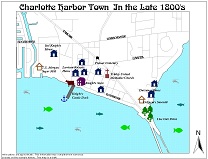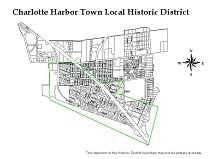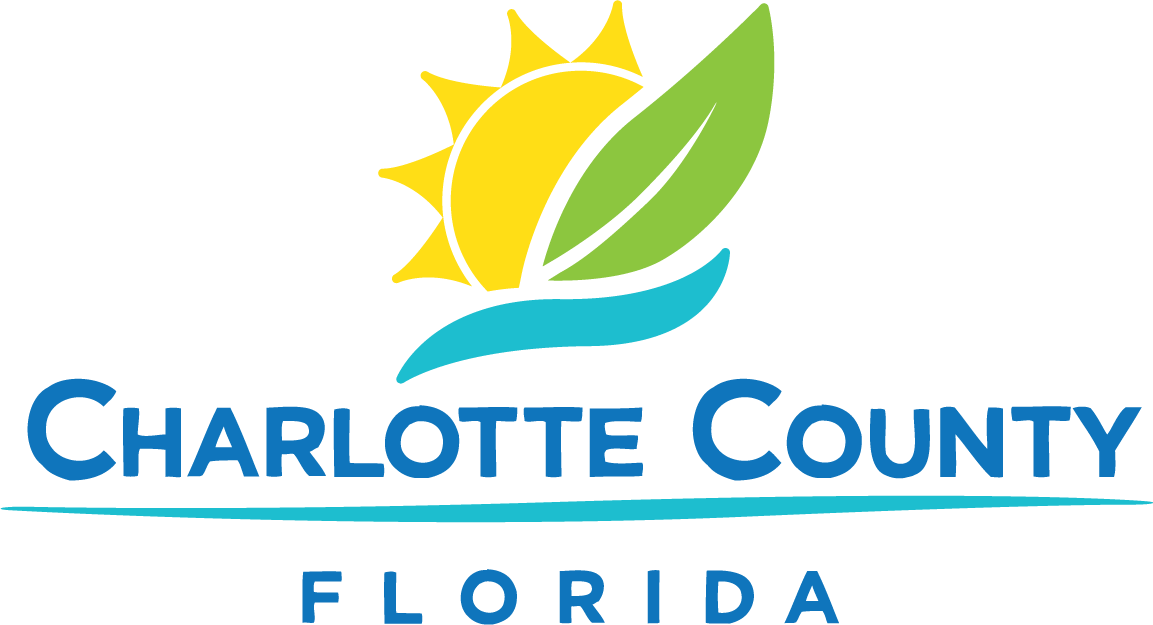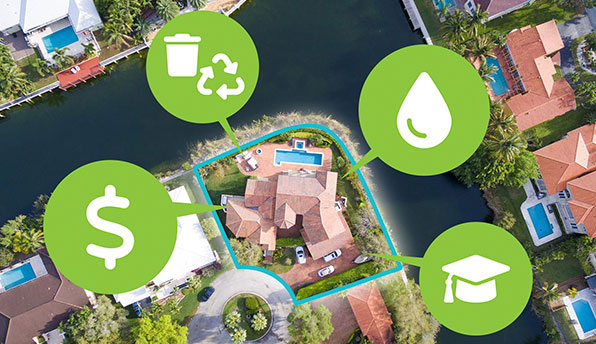Then
 Charlotte Harbor is one of the oldest areas in Charlotte County. It was platted in the 1860s around what is now the Charlotte Harbor fishing pier. During the Civil War, the pier was used to ship cattle to the Confederate Army. After the war, the pier continued to operate as a focus of trade with Cuba and other Caribbean islands. The area around the pier saw the construction of a grid of streets developed with homes, stores, a post office, and a church.
Charlotte Harbor is one of the oldest areas in Charlotte County. It was platted in the 1860s around what is now the Charlotte Harbor fishing pier. During the Civil War, the pier was used to ship cattle to the Confederate Army. After the war, the pier continued to operate as a focus of trade with Cuba and other Caribbean islands. The area around the pier saw the construction of a grid of streets developed with homes, stores, a post office, and a church.
 This area remained relatively unchanged until the 1970s when development of the surrounding Port Charlotte area accelerated. This development lead to the realignment of U.S. 41, bisecting the Charlotte Harbor neighborhood and impacting the depth of commercial parcels along the U.S. 41 corridor in Charlotte Harbor. The six- laning of U.S. 41 brought more traffic but impacted the access and frontage of existing businesses along the corridor. Lack of central sewer and adequate water pressure for fire protection resulted in less private investment as developers looked further north of the area to build new commercial developments. Housing stock began to deteriorate as the residential market also moved further north to larger lots with additional amenities. Charlotte Harbor experienced a drastic drop in property values.
This area remained relatively unchanged until the 1970s when development of the surrounding Port Charlotte area accelerated. This development lead to the realignment of U.S. 41, bisecting the Charlotte Harbor neighborhood and impacting the depth of commercial parcels along the U.S. 41 corridor in Charlotte Harbor. The six- laning of U.S. 41 brought more traffic but impacted the access and frontage of existing businesses along the corridor. Lack of central sewer and adequate water pressure for fire protection resulted in less private investment as developers looked further north of the area to build new commercial developments. Housing stock began to deteriorate as the residential market also moved further north to larger lots with additional amenities. Charlotte Harbor experienced a drastic drop in property values.
In the beginning of the 1990s, residents and small business owners began to recognize the need to band together to reverse the blight of Charlotte Harbor. The Charlotte Harbor Committee was formed by volunteers who first met with the Charlotte County Sheriff's Office to develop a neighborhood watch group to deter crime. Following moderate success from this activity, the group next planned and executed "Clean Up Days", which addressed the debris that had collected on abandoned lots. As the success of these efforts became apparent, the group was able to convince the Charlotte County Board of County Commissioners (BCC) to declare the area a Community Redevelopment Area.
In 1992, the BCC designated Charlotte Harbor a Community Redevelopment Area pursuant to Florida Statutes, Section 163.330 and also declared themselves the Community Redevelopment Agency in charge of overseeing the redevelopment of the area. A seven-member advisory board, called the Community Redevelopment Agency Advisory Committee, was created for the purpose of working directly with residents, merchants and government officials. Since 1994, the committee has worked hard to build consensus between all the various interests in the neighborhood as well as advise the BCC. As a consequence of the efforts by residents, business owners, CRAAC members, and county staff, the property appraiser's office reported that the property values in the area stopped declining in 1998.
In 2003, the BCC approved a reoccurring funding source called tax increment for the area which has and will continue to provide the opportunity for the Charlotte Harbor CRA to leverage local tax dollars with grant dollars to implement projects.
Charlotte Harbor was severly impacted by Hurricane Charley in 2004, as many buildings were damaged or demolished. One positive outcome was the use of grant funds to provide a central sewer system and improved water pressure to the area. The CRA is governed by land use standards found both in the Charlotte 2050 Comprehensive Plan and the Charlotte County Land Development Code. For details please visit: Community Development
Charlotte Harbor Revitalization Plan - On June 23, 2015 the Board of County Commissioners adopted the Charlotte Harbor Revitalization Plan and Future Land Use Map changes. One of the main changes is the creation of the Riverwalk Subdistrict. The new district establishes a maximum density of 24 units per acre and a maximum height of 90 feet based on performance standards. The intent of the new district is to encourage private investment in the area adjacent to the US41 bridges and parallel to the waterfront. For detail information visit 2015 Adopted Comprehensive Plan Changes. The changes became effective on August 31, 2015.
Now
Several major improvements including the completion of the central sewer system, improved water capacity for fire protection, the development of Bayshore Live Oak Park, and the demolition of deteriorated properties have improved the area. Crime has been reduced, and small private sector investments have been made. The vision implemented through architectural standards and improvements to pedestrian access to the waterfront have resulted in private investment in the area and has positioned this area for future development.






